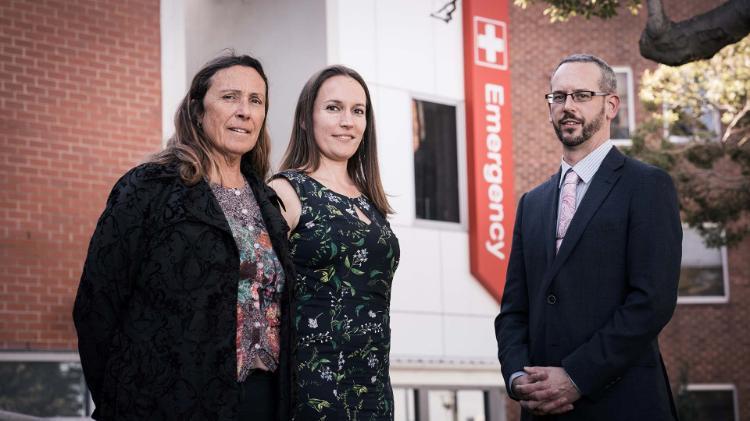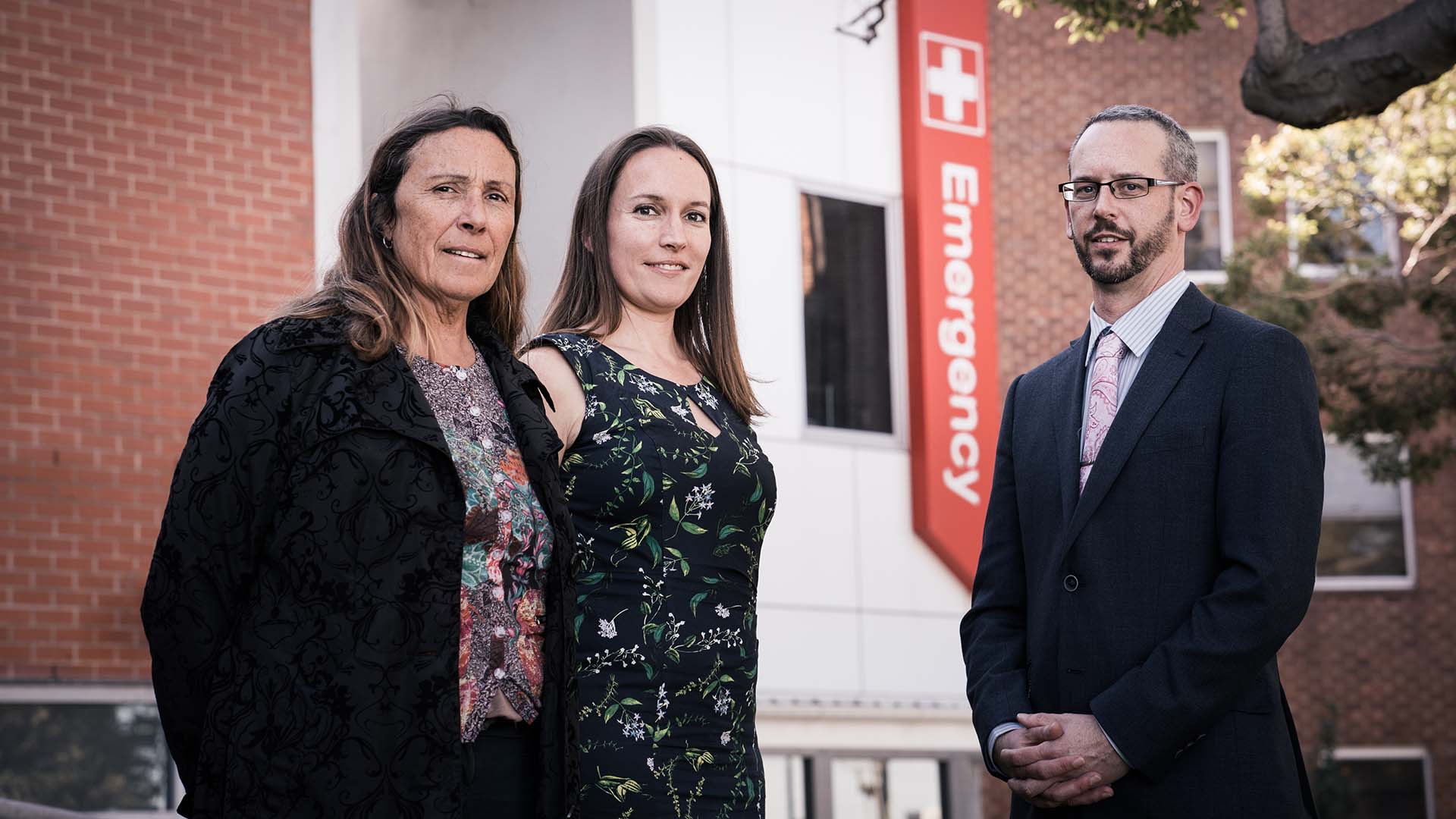July 9, 2019
Repeat visits to emergency departments less common than thought
Study findings will enable better use of resources and improved patient outcomes
A study analysing patient visits to hospital emergency departments found some surprising results and will help health services deliver better outcomes to patients, enable resources to be allocated more efficiently, and allow emergency departments to operate more effectively.
Across Australia, visits to public hospital emergency departments have been increasing faster than population growth. Between 2013-14 and 2017-18, the number of visits to public hospital emergency departments increased by 11 per cent at an average of 2.7 per cent each year.
In the Illawarra, visits to the Wollongong Hospital Emergency Department have risen from 53,971 in 2011-12 to 68,786 in 2017-18.
With that in mind, a research team led by Dr Luise Lago from the University of Wollongong (UOW) Centre for Health Research Illawarra Shoalhaven Population (CHRISP) — and including clinicians from the Illawarra Shoalhaven Local Health District (ISLHD) — wanted to get a better understanding of which people were using the emergency department repeatedly and why.
The results of their study are published in the British Medical Journal, BMJ Open.
“There is a widely-held view among researchers, policy makers, managers, and clinicians, that a large number of people repeatedly visit emergency departments year after year, taking up beds that are needed for more urgent patients,” Dr Lago said.

Dr Luise Lago (centre) with fellow researcher Dr Victoria Westley-Wise, and Illawarra Shoalhaven Local Health District Service Lead of Emergency Mr James Brinton outside Wollongong Hospital Emergency Department. Photo: Aristo Risi
Her research team analysed more than one million emergency department visits using data available on the Illawarra Health Information Platform (IHIP), resulting from a joint research partnership between UOW and ISLHD.
“Instead of just looking at a single year, we looked back over 10 years, and used complex techniques to analyse long-term patient patterns,” Dr Lago said.
“Our study conclusively shows that the group of frequent attenders is constantly changing, both overall, and for every age group. This was surprising to policy makers and clinicians and shows the importance of looking at long-term patient data.”
While some patients visit emergency departments often, most frequent attenders were “here one year, and gone the next”. Only 600 people in the study were ongoing frequent attenders, visiting emergency departments more than seven times a year for longer than two years. Most were younger adults, many had substance abuse and mental health problems, and they were more likely to be from lower income areas.
Professor Kathy Eagar, director of the Australian Health Services Research Institute at UOW and a co-author of the study, believes the study findings have potential to make a significant impact.
“Many health services in Australia and internationally have spent considerable resources trying to reduce unnecessary emergency department visits. This inappropriately targeted approach has wasted significant resources, and our local research points to an improved approach, which is already informing state policy,” she said.
Professor Eagar helped establish the data information platform as she saw the potential in using large amounts of data available locally.
“Having researchers and clinicians work together using IHIP data supported by published evidence will help to improve local health service delivery,” she said.
Mr James Brinton, Service Lead of Emergency at ISLHD, said the study findings would benefit patients and enable emergency departments to operate more efficiently.
“We believe that addressing the needs of this small group of ongoing frequent attenders will result in the best outcomes for the patient and for our emergency departments,” he said.
As a result of this study, Mr Brinton is coordinating a taskforce including ISLHD, UOW, the primary health network COORDINARE, and NSW Ambulance to implement and assess the impact of changes coming out of the study, such as more targeted care coordination.
“We are hoping that this valuable, evidence-based, and collaborative research will help some of the most vulnerable of our community,” he said.
About the study
‘Here one year, gone the next? Investigating persistence of frequent emergency department attendance: a retrospective study in Australia’ by Luise Lago, Victoria Westley-Wise, Judy Mullan, Kelly Lambert, Rebekah Zingel, Thomas Carrigan, Wayne Triner, and Kathy Eagar is published in BMJ Open.
The authors acknowledge the Illawarra Health Information Platform (IHIP) research partnership established between the Illawarra Shoalhaven Local Health District (ISLHD) and the University of Wollongong, with ISLHD providing funding support and the data used in this study, and the NSW Ministry of Health who authorised the data release.
